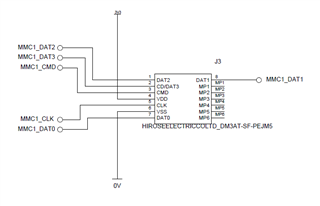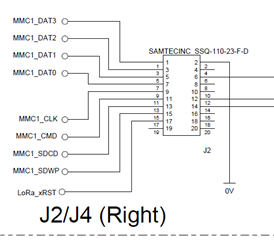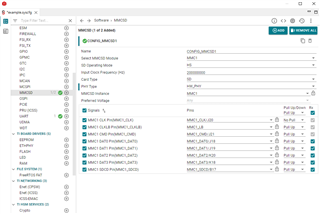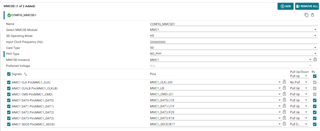Other Parts Discussed in Thread: SYSCONFIG, TMDS243EVM
Tool/software:
I am having trouble with the MMC1 interface.
I have a small board that attaches to the launchpad with a μSD card connector.
The connections are as shown in the below images.
The SD card connector is DM3AT-SF-PEJM5 from Hirose.
I have connected 4 DATA lines, 1 CLOCK line, 1 COMMAND line and 1 Chip Detect line between connector / LaunchPad.
The Chip Detect line is MP2 in the schematic, and I have it jumpered to GPIO1_77 (MMC1_SDCD = B17)
Power is taken from the header (3.3V / 0V)
Comparing to the AM243x-EVM schematics:
1) I don't have a PD resistor on the MMC1_CLK line
2) MMC1_SDWP = unused (no connection)
Are there any concerns on the HW setup?
What do I need to do SW-wise?
Is it enough to create an empty project for LP-AM243x, update SYSCFG for the MMC1 interface/connections,
then copy the main.c and mmcsd_raw_io.c into the project?
Do I have to make any changes for Write Protect, etc?





